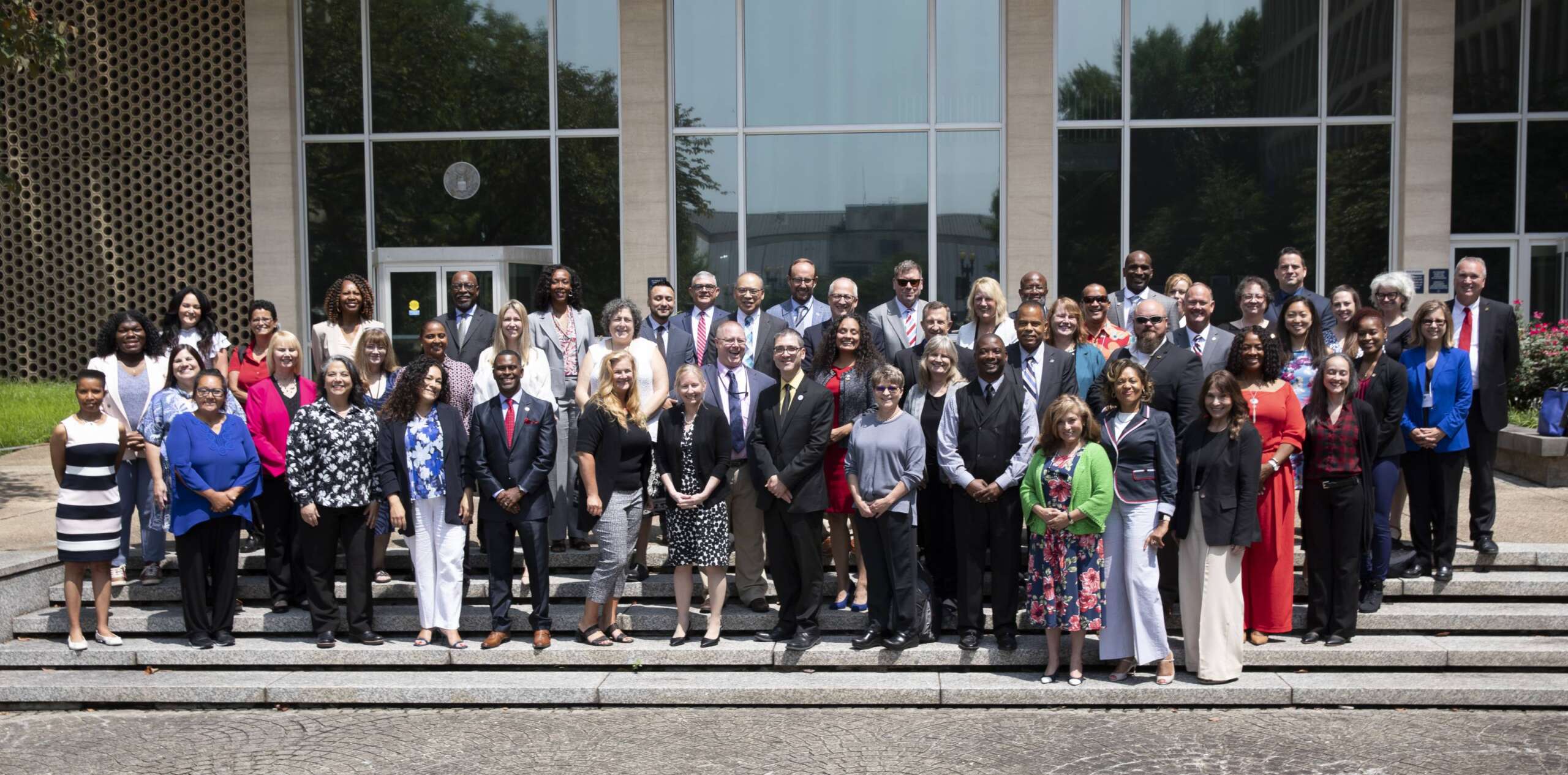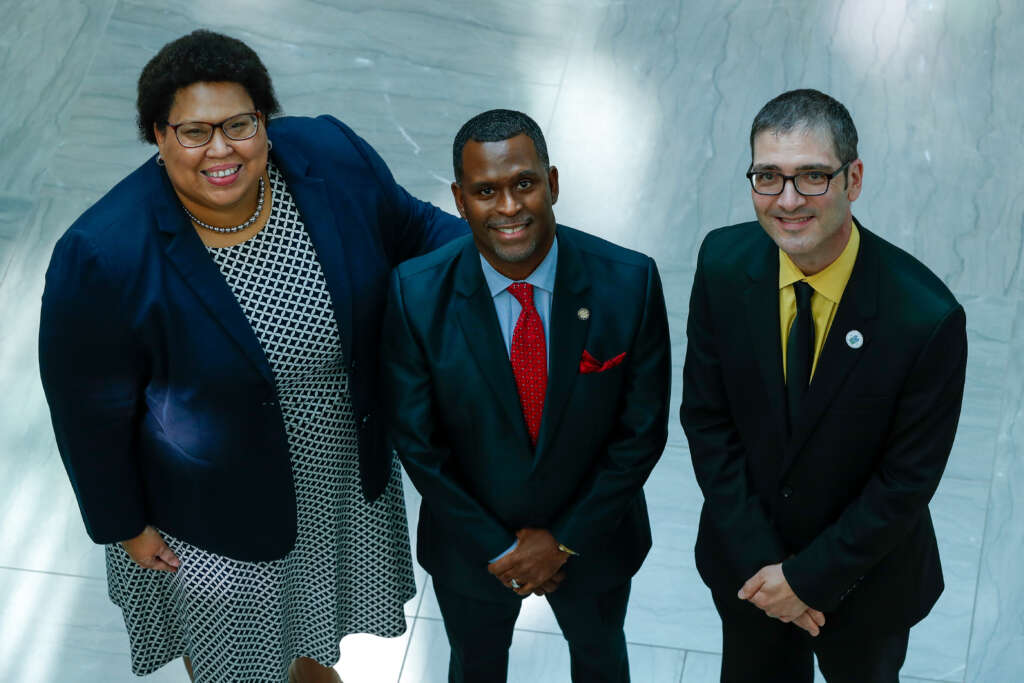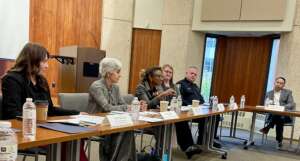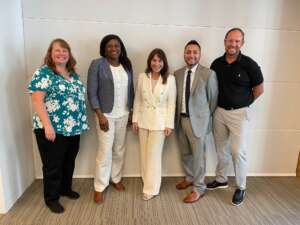The 85 percent: FEBs burst the D.C. bubble
From Feb. 12-16, Federal News Network will, day by day, dive into the details of each of the four Federal Executive Board regions currently operating across the U.S. On top of featuring the work and plans of each of the boards, we’ll take a closer look at the path that lies ahead for FEBs. Stay tuned for more!
You may already know that 85% of the more than two million federal employees are actually outside of Washington, D.C., and working across the entire country.
But with such a large, dispersed workforce, how do these feds connect, collaborate and work together to reach real solutions to problems?
For decades, Federal Executive Boards have been at the forefront of bridging together the nationwide federal workforce. Stretching from Honolulu, Hawaii, to Boston, Massachusetts — Seattle, Washington, to South Florida, and many places in between, FEBs have a large network already underway. Even so, recent changes to the decades-old program will refresh how FEBs function moving forward.
Federal News Network has spent months connecting with FEB leaders all across the country to learn more about what they do, the impact they have had in their local areas, and their plans in store for the future. Over the next week, we’ll be focusing on four different regions of the country — one per day:
Eastern Region (Feb. 12) | Southern Region (Feb. 13) | Central Region (Feb. 14) | Western Region (Feb. 15)
Also check out Drew Friedman’s exclusive interview with Kelly DeGraff, deputy associate director of the Federal Executive Boards at the Office of Personnel Management, and her look-ahead at the future of FEBs.
So where exactly are these FEBs, and what do they do? The interactive map below depicts all the current FEB locations. Click on each of the four regions to learn more about the federal workforce in the area — and click on the region name in each pop-up to be taken to details about that FEB region and the stories and perspectives of the feds who live and work there.
(Story continues below)
Map of FEBs nationwide
Eastern Region
Number of Employees: 608,900
Regional FEBs:
- Baltimore, Md.
- Boston, Mass. (inactive)
- Buffalo, N.Y. (inactive)
- New York City, N.Y.
- Newark, N.J.
- Philadelphia, Penn.
- Pittsburgh, Penn.
By the numbers:
5 biggest federal employers in the region
- Department of the Navy: 93,528
- Department of Veterans Affairs: 89,415
- Department of the Army: 53,108
- Defense Department Fourth Estate: 48,016
- Department of Health and Human Services: 40,532
Top 3 states for federal employment in the region
- District of Columbia: 146,644
- Virginia: 130,350
- Maryland: 124,918
Southern Region
Number of Employees: 509,299
Regional FEBs:
- Atlanta, Ga.
- Dallas-Fort Worth, Texas
- Houston, Texas
- New Mexico (inactive)
- New Orleans, La.
- Oklahoma
- San Antonio, Texas
- South Florida
By the numbers:
5 biggest federal employers in the region
- Department of Veterans Affairs: 149,179
- Department of the Army: 75,557
- Department of the Air Force: 69,941
- Defense Department Fourth Estate: 35,105
- Department of the Navy: 33,229
Top 3 states for federal employment in the region
- Texas: 109,235
- Florida: 81,315
- Georgia: 69,668
Central Region
Number of Employees: 315,065
Regional FEBs:
- Chicago, Ill.
- Cincinnati, Ohio
- Cleveland, Ohio
- Colorado
- Detroit, Mich.
- Kansas City, Mo.
- Minnesota
- St. Louis, Mo.
By the numbers:
5 biggest federal employers in the region
- Department of Veterans Affairs: 100,075
- Department of the Air Force: 43,079
- Department of the Army: 34,935
- Agriculture Department: 23,520
- Defense Department Fourth Estate: 23,193
Top 3 states for federal employment in the region
- Ohio: 48,687
- Illinois: 39,187
- Colorado: 34,510
Western Region
Number of Employees: 272,900
Regional FEBs:
- Honolulu-Pacific, Hawaii
- Los Angeles, Calif.
- Oregon
- San Francisco, Calif.
- Seattle, Wash.
By the numbers:
5 biggest federal employers in the region
- Department of Veterans Affairs: 66,208
- Department of the Navy: 64,017
- Department of the Army: 20,996
- Department of the Air Force: 17,521
- Defense Department Fourth Estate: 16,800
Top 3 states for federal employment in the region
- California: 126,875
- Washington: 50,239
- Arizona: 28,777
Federal Executive Boards, which have been in operation since 1961, each represent roughly 140 different agencies and components. In 28 different locations across the country, boards of senior leaders in government collaborate to discuss goals for improving the federal workforce, consider local challenges, and host various events in their area. The pockets of federal leadership then talk back to Washington, to try to bring some of their ideas and findings to scale.
The boards also help create and coordinate plans for any national or local emergencies — such as natural disasters like tornadoes or hurricanes — and in many cases, figure out how to manage much smaller weather events, like snow days.
“FEBs can certainly enable resource-sharing to make government more efficient in the field,” Dan Chenok, executive director of the IBM Center for The Business of Government, said in an interview. “Let’s say there’s an earthquake in California, or in Florida — FEBs work together to say, ‘how do we make sure, as agencies are making decisions to respond to this in D.C., we’ve got a plan to execute that more effectively?’”

FEBs also host blood drives, help coordinate the Combined Federal Campaign, and host recognition ceremonies each year for the significant contributions of federal employees working across the country.

Year-round, federal employees in different parts of the country can also attend FEB-hosted workshops, trainings and employee development programs — covering everything from leadership skills, and how to apply for retirement, to alternative dispute resolution, and training to use opioid overdose kits.
On top of that, FEBs also help with ideas for federal workforce building. While strategic human capital management and mission-critical skills gaps are major challenges to the federal workforce, the geographic spread of FEBs give them the opportunity to help agencies identify and address skills gaps more immediately.
“Some of the FEBs that we’ve encountered that have been most effective have also been really good collaborators,” Sara Mogulescu, president of the Volcker Alliance, said in an interview. “Figuring out how to connect agencies with universities, colleges and local talent outlets — and thinking about building closer connections outside the federal government to drive priorities within.”
Despite their significant role, a lack of attention on the work of FEBs has led to two main challenges for all the local offices — fragmentation and funding.
As a result of the two challenges, some FEBs are more active, while others have gaps in their leadership — in some cases enough for a couple boards to be currently considered “inactive.”

In response to the challenges, though, there have been recent changes to both the structure and budgeting of FEBs, which could transform the entire program. The FEBs’ main shop is now headed by the Office of Personnel Management, which works in concert with the Office of Management and Budget and the General Services Administration to pave a strategic plan for the future.
“I think the message behind that shift is one of priority,” Terry Gerton, President and CEO of the National Academy of Public Administration, said in an interview. “One of the missions of the FEBs has always been to facilitate federal hiring and outreach in the communities that they’re located. It seems to me, as an outsider watching this, that the shift to OPM means that more emphasis will be placed on the human capital function of FEBs.”
The next few years will redefine how FEBs function, and how much of an impact their work can have on federal employees across the country. Kelly DeGraff, OPM’s new deputy associate director for FEBs, sees 2024 as a transitional year for the boards, as they embark on a new management structure, as well as a new funding model.

“There’s a lot of change that’s happening right now — that’s really important to understand,” DeGraff said in an interview. “Right now, my job is to help us navigate this change. My focus is on a blend of organizational excellence and meaningful impact.”
At the same time that FEBs are experiencing a structural shakeup, the funding for FEBs is also becoming more stable. In the past, FEBs functioned largely on an ad-hoc basis, relying solely on voluntary funding from agencies in each geographic region.
But with a recent shift, agencies now have authorization to contribute a predetermined amount of funds to OPM in support of the FEB program.
DeGraff said the new funding model is a “game-changer.”
“It allows us to have this predictable funding, allows us to better plan for allocation of resources, including human capital and operational expenses,” DeGraff said. “It’s all leading to more effective program delivery. We’re really excited.”
